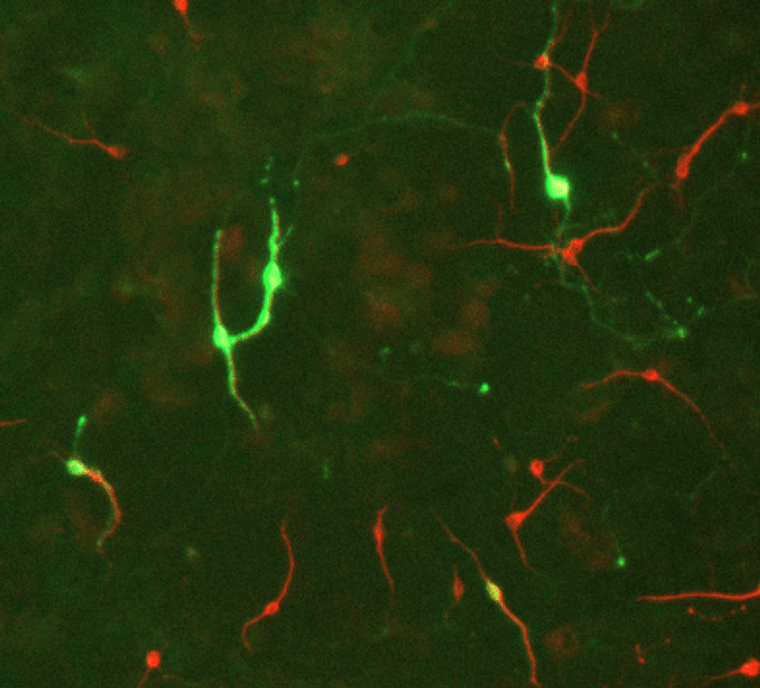| Host: |
Rabbit |
| Applications: |
WB/IHC/ICC |
| Reactivity: |
All Mammalian/Chicken |
| Note: |
STRICTLY FOR FURTHER SCIENTIFIC RESEARCH USE ONLY (RUO). MUST NOT TO BE USED IN DIAGNOSTIC OR THERAPEUTIC APPLICATIONS. |
| Short Description: |
Rabbit polyclonal antibody anti-Tyrosine Hydroxylase is suitable for use in Western Blot, Immunohistochemistry and Immunocytochemistry research applications. |
| Clonality: |
Polyclonal |
| Conjugation: |
Unconjugated |
| Isotype: |
IgG |
| Formulation: |
100 µl in 10 mM HEPES (pH 7.5) , 150 mM NaCl, 100 µg per ml BSA and 50% Glycerol. |
| Purification: |
This antibody was antigen affinity purified from pooled serum. |
| Dilution Range: |
WB 1:1000IHC 1:1000ICC 1:500-1:1000IP |
| Storage Instruction: |
Store at-20°C for up to 1 year from the date of receipt, and avoid repeat freeze-thaw cycles. |
| Gene Symbol: |
Th |
| Gene ID: |
25085 |
| Uniprot ID: |
TY3H_RAT |
| Immunogen: |
SDS-denatured, native rat tyrosine hydroxylase purification from pheochromocytoma. |
| Post Translational Modifications | Phosphorylated on Ser-19, Ser-31 and Ser-40 by several protein kinases with different site specificities. Phosphorylation at Ser-31 and Ser-40 leads to an increase of TH activity. Phosphorylation at Ser-40 activates the enzyme and also counteracts the feedback inhibition of TH by catecholamines. Phosphorylation of Ser-19 and Ser-31 triggers the proteasomal degradation of TH through the ubiquitin-proteasome pathway. Phosphorylation at Ser-31 facilitates transport of TH from the soma to the nerve terminals via the microtubule network. Phosphorylation at Ser-19 induces the high-affinity binding to the 14-3-3 protein YWHAG.this interaction may influence the phosphorylation and dephosphorylation of other sites. Ser-19 increases the phosphorylation at Ser-40 in a hierarchical manner, leading to increased activity. |
| Function | Catalyzes the conversion of L-tyrosine to L-dihydroxyphenylalanine (L-Dopa), the rate-limiting step in the biosynthesis of cathecolamines, dopamine, noradrenaline, and adrenaline. Uses tetrahydrobiopterin and molecular oxygen to convert tyrosine to L-Dopa. In addition to tyrosine, is able to catalyze the hydroxylation of phenylalanine and tryptophan but with lower specificity. Positively regulates the regression of retinal hyaloid vessels during postnatal development. |
| Protein Name | Tyrosine 3-MonooxygenaseTyrosine 3-HydroxylaseTh |
| Database Links | Reactome: R-RNO-209905 |
| Cellular Localisation | CytoplasmPerinuclear RegionNucleusCell ProjectionAxonCytoplasmic VesicleSecretory VesicleSynaptic VesicleWhen Phosphorylated At Ser-19 Shows A Nuclear Distribution And When Phsphorylated At Ser-31 As Well At Ser-40 Shows A Cytosolic DistributionExpressed In Dopaminergic Axons And Axon Terminals |
| Alternative Antibody Names | Anti-Tyrosine 3-Monooxygenase antibodyAnti-Tyrosine 3-Hydroxylase antibodyAnti-Th antibodyAnti-Th antibody |
Information sourced from Uniprot.org
12 months for antibodies. 6 months for ELISA Kits. Please see website T&Cs for further guidance









